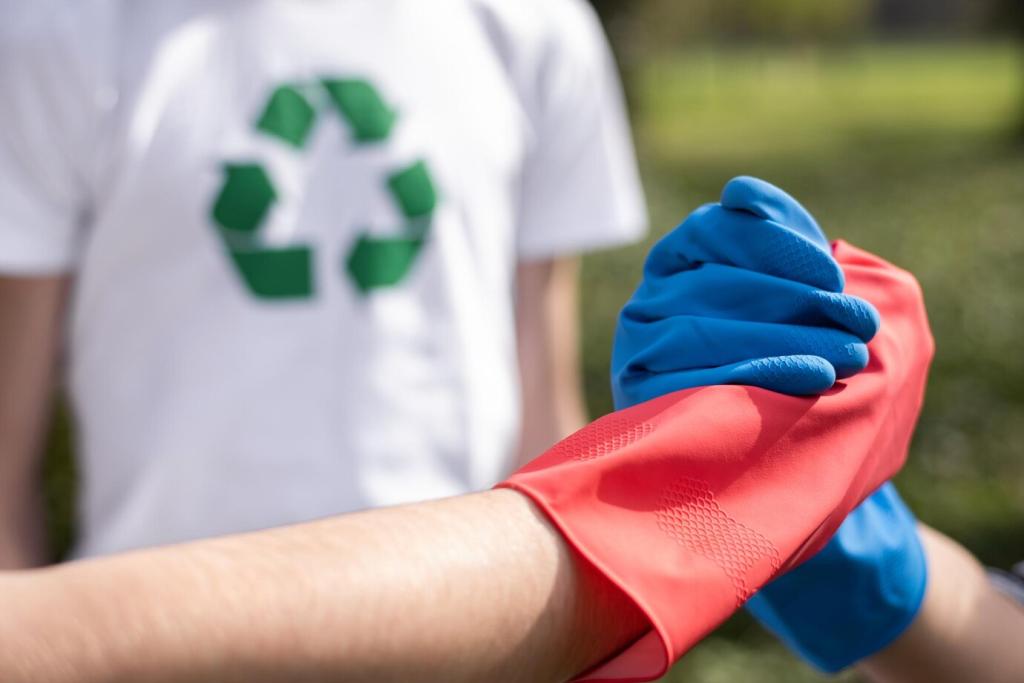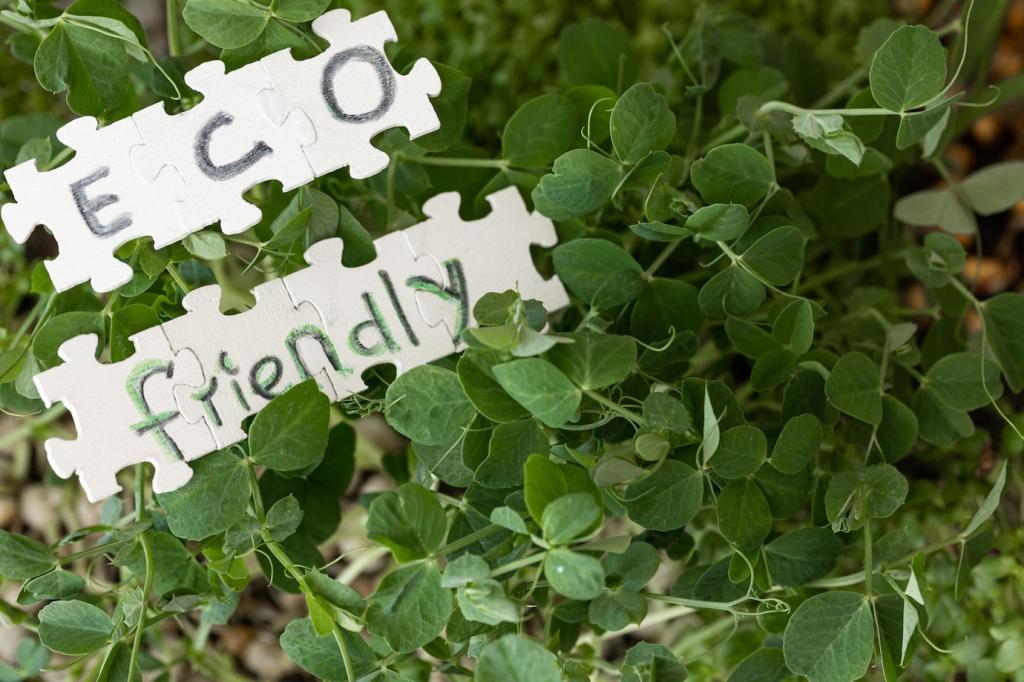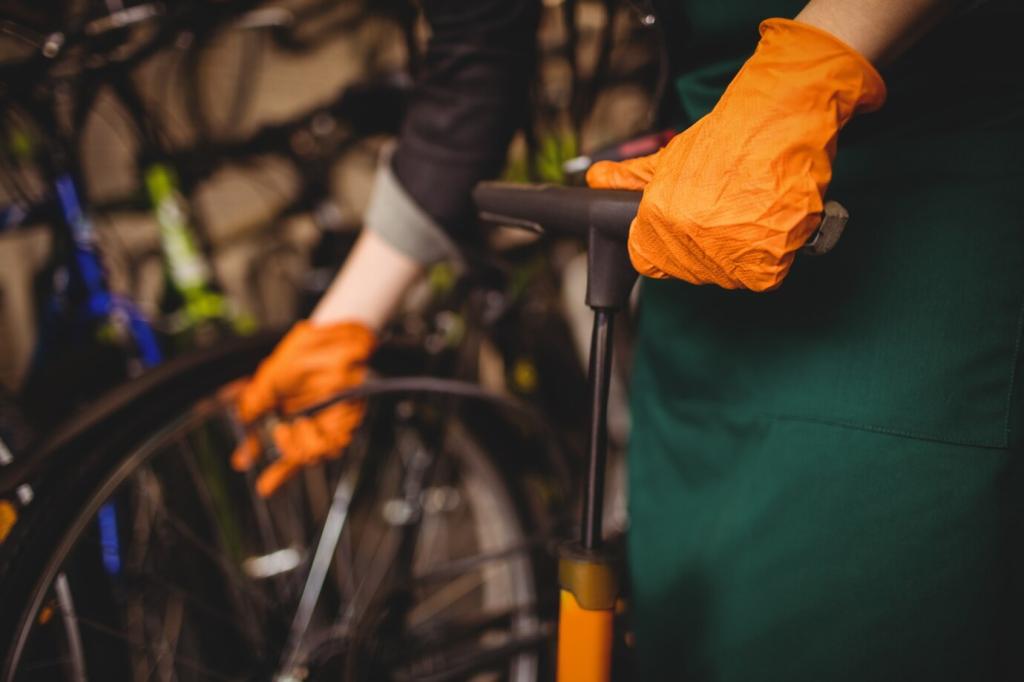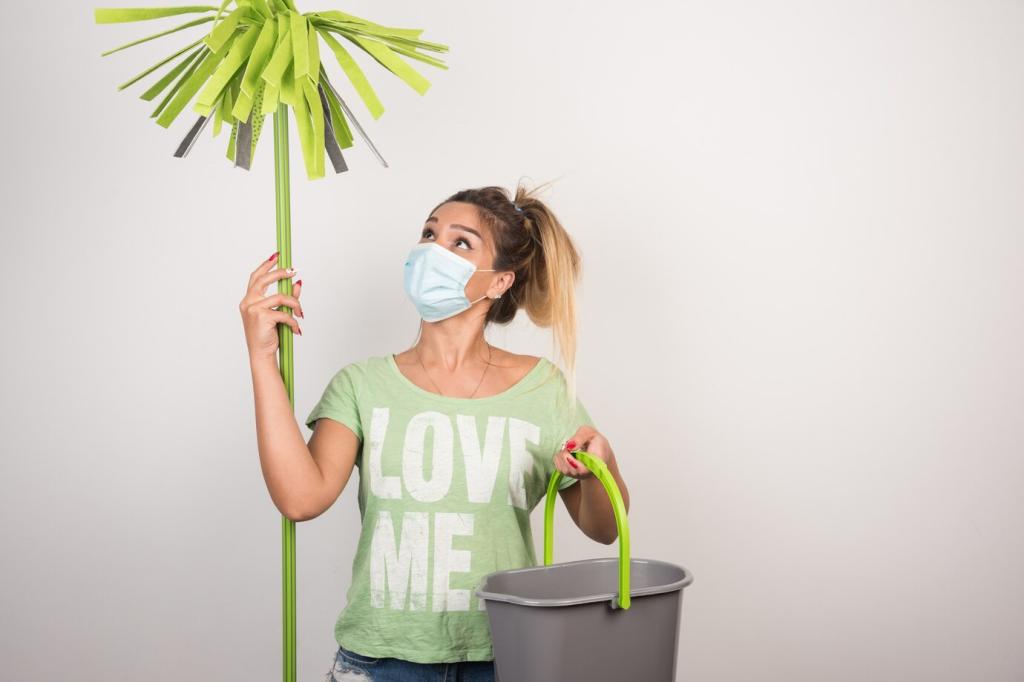Safety, Storage, and Sustainable Routines
Choose an inconspicuous area—back edge, underside, or hidden seam. Apply your cleaner with a cotton swab, wait until fully dry, and assess for discoloration or texture change. If safe, proceed gradually in sections. Share your test results in the comments so others with the same fabric or finish can learn from you.
Safety, Storage, and Sustainable Routines
Never mix vinegar with hydrogen peroxide in the same bottle. Avoid combining acids with strong bases; they neutralize and lose cleaning power. Keep hydrogen peroxide in an opaque container, and label every spray with name and dilution. Subscribe to download our safety checklist and dilution guide for quick, reliable reference.








